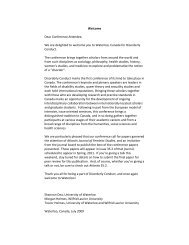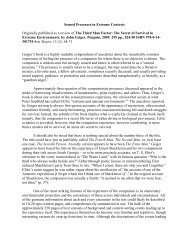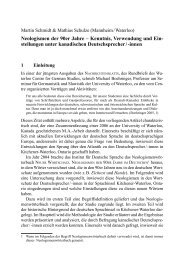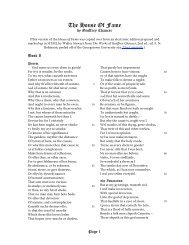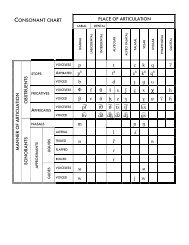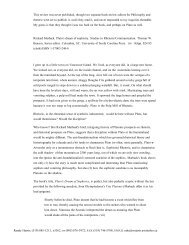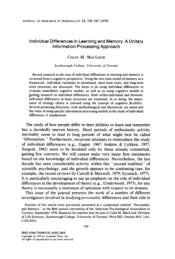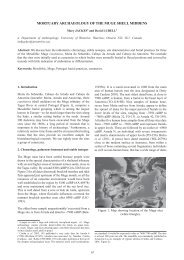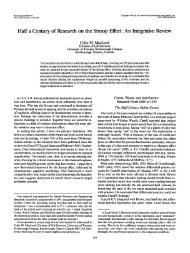The mid seventeenth century collapse of Iroquoian Ontario:
The mid seventeenth century collapse of Iroquoian Ontario:
The mid seventeenth century collapse of Iroquoian Ontario:
You also want an ePaper? Increase the reach of your titles
YUMPU automatically turns print PDFs into web optimized ePapers that Google loves.
the Mid Seventeenth centuRy collapSe <strong>of</strong> iRoquoian on ta R i o<br />
one or two individuals. However, the range <strong>of</strong> variation within the larger features is such that<br />
the explanation must be more complex than seasonal burial alone. <strong>The</strong> most elaborate grave<br />
(Feature 62) is reminiscent <strong>of</strong> other – unfortunately less well-documented – Neutral burials<br />
(Jackes, 1996, p. 138) and while this may be “typical” <strong>of</strong> Neutral burial practices, its size alone<br />
sets it apart. <strong>The</strong> other large features are different from Feature 62 and vary in sex ratios,<br />
juvenile to adult ratios and details <strong>of</strong> burial.<br />
Methodology<br />
A first attempt to understand North American archaeological demography by a comparative<br />
methodology (Jackes, 1986) used probability <strong>of</strong> death, q x , values (also called mortality<br />
quotients) as indicators <strong>of</strong> mortality, since the standard methods <strong>of</strong> deriving crude death and<br />
birth rates could not be applied to these sites. <strong>The</strong> reason for this is that the q x values for all<br />
individuals (apart from 26 indeterminate adults) at Grimsby show two things: firstly, that<br />
infants and young children were under-represented (they were in fact <strong>of</strong>ten buried separately,<br />
Lennox, Fitzgerald, 1990, p. 455, so that it is unlikely that a complete representation<br />
could be obtained); secondly, that adult age estimates are no more than approximations and<br />
are considered too unreliable to allow full demographic analysis from age at death data<br />
(Jackes, 1985; 2000).<br />
My research led to the conclusion that some <strong>mid</strong>-western sites from the Late Woodland<br />
period had high mortality. Grimsby, although more dependent upon cultivars, apparently<br />
belonged in this high mortality group, together with Ossossané, a Huron ossuary where the<br />
burial ceremonies were perhaps described by Brébeuf in May 1636 ( JR, 10, p. 193-305). Both<br />
burial sites seemed to have had high mortality in the 10-19 year age group. This immediately<br />
presented a problem, in that available evidence did not suggest differential high adolescent<br />
age-specific mortality for any <strong>of</strong> the known diseases which afflicted <strong>Ontario</strong> during the<br />
period from 1620 to 1650 (Jackes, 1986; 1996).<br />
Overall, the mortality at Grimsby was as high as the Larson Site, an Arikara cemetery <strong>of</strong><br />
the late eighteenth <strong>century</strong>. This appeared to be in line with what could be expected <strong>of</strong> post-<br />
Contact introduced disease. But I had serious doubts, specifically because subadult mortality<br />
at Grimsby and Ossossané was higher even than at Larson (Jackes, 1986, fig. 2, p. 40) 8 .<br />
It is important to note that apparent high mortality among children actually indicates<br />
high fertility and there is every evidence that Huron and Neutral fertility was not in fact<br />
extremely high (Jackes, 1994). Huron ossuaries from earlier time periods suggested acceptable<br />
fertility levels derived from the skeletal evidence: total fertility rates (TFR - the number<br />
8. High adolescent mortality would be unusual. Sköld (1997) reports a more even distribution <strong>of</strong> deaths over<br />
all age groups in an area similarly isolated from constant infection, but there is no indication <strong>of</strong> extremely<br />
high late adolescent mortality as at Grimsby. A breakdown <strong>of</strong> the causes <strong>of</strong> death among the Saami for<br />
1750-1820 (the pre-vaccination period) shows variations over time: in 1750-60 smallpox mortality was just<br />
over 13% <strong>of</strong> total mortality and thereafter was 4-5%, falling below 2% by 1800. <strong>The</strong> Saami isolated smallpox<br />
victims whereas Huron disease treatments may have increased the morbidity and mortality rates (e.g.<br />
JR, 14, p. 63; 19, p. 89). But, in fact, Sagard (1939, p. 198) praises the isolation <strong>of</strong> some infected patients as<br />
being an excellent idea.<br />
355



